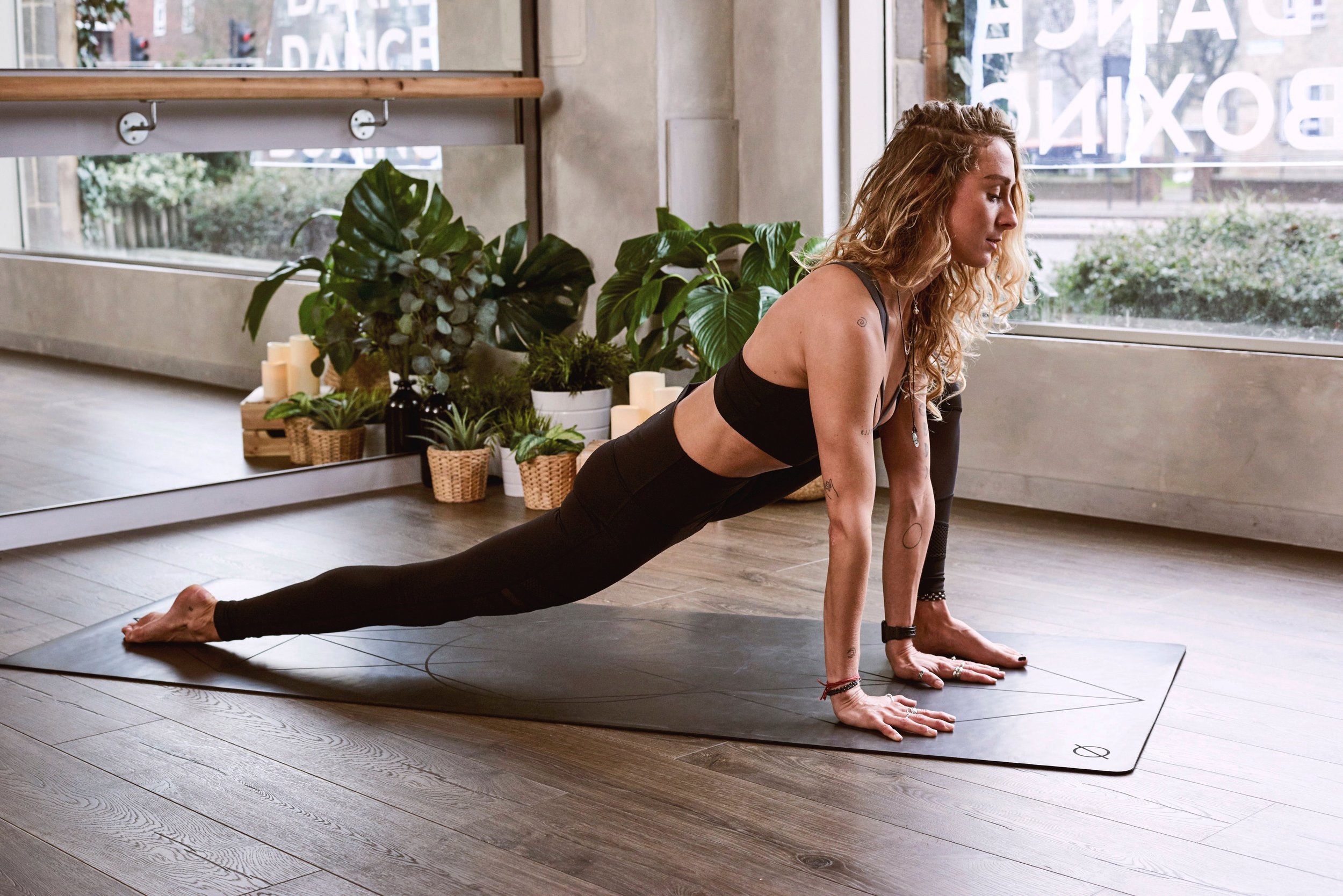What is Pilates?
An exercise regimen that is typically performed on a floor mat or with the use of specialized apparatus and aims to improve flexibility and stability by strengthening the muscles and especially the torso-stabilizing muscles of the abdomen and lower back.
There are two different kinds of Pilates classes: mat classes and reformer classes.
You'll be tackling a class that's based on either a mat, which is a tad thicker than your standard yoga mat, to cushion pressure points, or a machine called a reformer, which is a sliding platform complete with stationary foot bar, springs, and pulleys that provide resistance. Know which one you're getting into before you commit to your workout.
Both options focus on the concept of control rather than cranking out endless reps or muscle exhaustion. In Pilates, your muscles are working to lift against gravity and (in the case of the reformer) the resistance of the springs or bands, with the ultimate goal of strengthening and isolating the right muscles. Your goal should be to take your time with the exercises, focus on the task at hand, and connect to your breath.
Regardless of what class you choose, make sure to let your instructor know you’re a beginner. This way, they'll be able to keep an eye on you throughout the class and offer modifications or form adjustments.
There are a few other pieces of equipment to know, but they probably won't show up in most beginner Pilates mat classes.
Many Pilates mat classes don't require any equipment other than, yes, a mat, which is usually provided. But other classes can use different equipment in addition to the reformer. The most common pieces of equipment are the Wunda, a low chair with padding and springs, the Cadillac (which looks a little like a bed with a canopy frame and is used in various ways for advanced students), the spine corrector, the high chair, and the Magic Circle, a ring you often use between your legs to create resistance.
You'll feel your muscles burn during class, and you'll probably be sore the next day.
While you may not be crushing high-intensity exercises like squat jumps or lifting heavy dumbbells, the mostly bodyweight routines that Pilates classes offer can be pretty intense. Take the signature Pilates Hundred, for example. A core-focused move that involves less than two inches of constant movement will make your abs burn. A good instructor should give you modifications so that you can perform each movement with good form (another reason to introduce yourself as a beginner before class starts).
Dedicating your entire focus to even the smallest movements means that you’ll work the muscles that each exercise intends. And that means you can be dealing with muscle soreness after your workout. Don’t fret: While next-day soreness may be at a whole new level after your first week, your body will get more used to the movements with time. Being sore the next day just means you’re challenging your muscles in new ways or working muscle groups that don't usually get much attention.
Pilates works several muscle groups.
While Pilates is most famous for strengthening the body’s core, it works many other areas as well, both external and internal. Pilates involves the entire body. In some of the really active movements, your heart rate goes up, which offers cardiac benefits. Many exercises also call for flexing and stretching your legs, arms, feet, ankles and neck.
Wear formfitting clothes—and don't forget your socks!
Even if you typically prefer loose-fitting workout wear, you're going to want to wear body-hugging options for Pilates classes. Wear capris or leggings with a tank top or fitted long-sleeved shirt. As for footwear, you can either be barefoot or wear socks for your session. If you're going to go for socks, find yourself a pair with rubber detailing on the soles so you don't slip on the mat or machine. A barefoot or socks-only approach will also help you navigate in and out of the straps on a standard reformer with ease.
Pilates should be a part of a well-rounded fitness plan.
Even if a studio offers unlimited classes for the first week, don’t plan on hopping into a class every day. Your body needs a day or two to recover from fatiguing resistance exercise such as Pilates.
“Pilates stretches, strengthens, and aligns your body all at the same time,” said Ann Marie, owner of Studio Align Pilates in Saginaw, Michigan.

